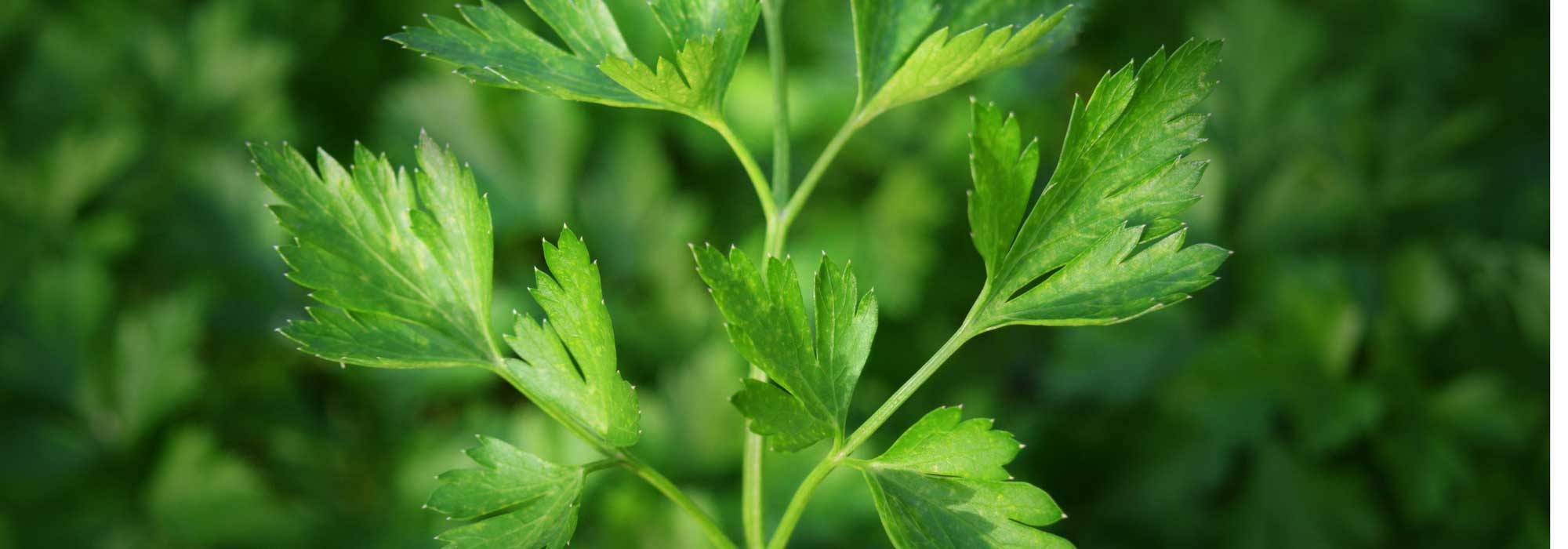
Parsley: sowing, planting, growing
Contents
Parsley in a nutshell
- Parsley is a herb renowned for its flavour but also for its numerous health benefits
- Flat-leaf parsley is more aromatic than curly parsley
- It is easy to grow, the only difficulty lies in its sowing which requires patience and attention
- It is generally grown as an annual, yet it is a biennial plant whose flowers attract a host of beneficial insects in the second year
- It is more resistant to cold than other herbs in the garden
- Parsley is well known for its culinary use, but less so for its use as a root vegetable
The word from our expert
Parsley is a robust aromatic plant that is easy to grow, both in the ground and in pots or window boxes, on a windowsill or balcony. Its many varieties are divided into two main types: flat-leaf parsley (petrosilum sativum) and curly parsley (petrosilum crispum). It is a reliable choice in the garden as its harvest is possible almost all year round. Aromatic and fragrant, its leaves are widely used in cooking, as well as for making herbal teas and parsley juice with numerous benefits.
Of biennial type, parsley has a unique life cycle: in the first year of cultivation, it provides an abundant harvest of green leaves with virtually no problems. The second year is quite different; the leaves are paler and tougher, floral stems appear, followed by delicate flowers in umbels that are highly melliferous, offering nectar to many beneficial insects. Although the first spring leaves can be harvested in the second year, it is wise to sow or plant it every year to obtain young plants that will quickly replace those from the previous year.
Botany
Botanical data
- Latin name Petroselinum sativum (L.)
- Family Apiaceae
- Common name Common flat-leaf parsley; Curly parsley; Tubers parsley
- Flowering Biennial
- Height 20 days at 20°C - Germination capacity
- Sun exposure sun, partial shade, or shade if your summer is hot and dry
- Soil type rich, humus-bearing, well-drained
- Hardiness The root withstands temperatures down to -10°C
parsley (Petroselinum sativum L.) is a biennial herbaceous plant that belongs, like carrot, parsnip, and fennel, to the large family of umbellifers or Apiaceae.
The most well-known are flat-leaf parsley and curly parsley (Petroselinum sativum var. crispum) consumed for their aromatic leaves enhancing the flavour of dishes. More obscure, tuberous parsley (Petroselinum crispum radicosum) is cultivated for its root and its foliage (less aromatic), it is cultivated like carrot. Parsley plants reach on average 30 cm tall the first year, although there are smaller dwarf varieties. The flower stems carry them to 60 cm in the second year.
The leaves of parsley are bright green, divided into three leaflets and then into deeply lobed sections. The second year after sowing, parsley produces, from spring onwards, flowering stems bearing umbels of tiny yellowish-green to white flowers. Pollination is described as entomophilous, it requires the presence of insects for the transport of pollen. Insects are very attracted to the nectar and pollen of parsley. At the end of summer, it goes to seed and small brown seeds then appear.
In ancient Greece, parsley symbolised strength, appetite, and joy of life. It was also adored by the Romans who introduced it to the countries of the Empire where they primarily cultivated it for decoration. It fell out of favour in the Middle Ages where it was associated with death and poor harvests.
Read also
Sowing of aromatic plantsThe main varieties of parsley
There are a lot of varieties of parsley. They differ by the aspect of the foliage but also by their size and habit, more or less compact.
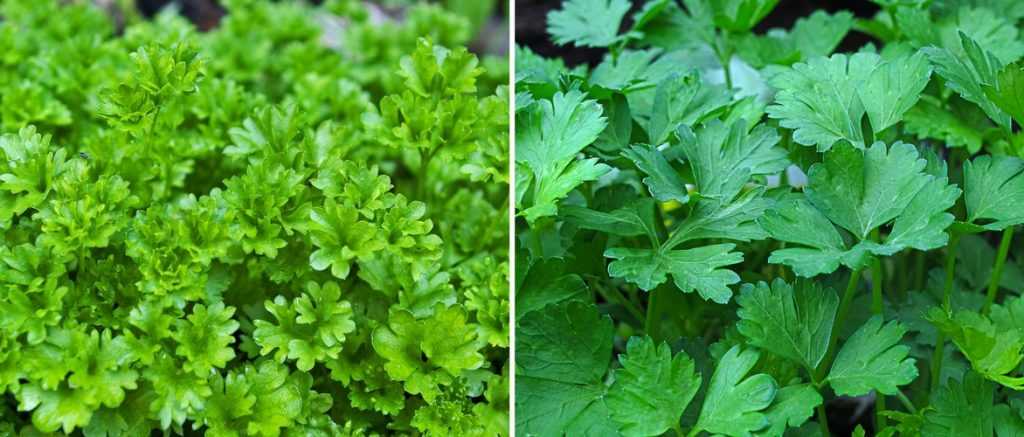
Curly or flat-leaf parsley, rather than choosing, grow both!
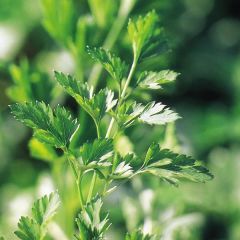
Flat Parsley Seeds - Petroselinum crispum
- Flowering time February
- Height at maturity 70 cm
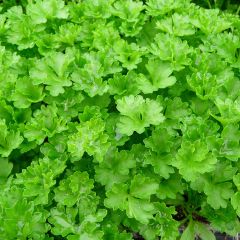
Flat-Leaved Parsley Amsterdam
- Height at maturity 60 cm
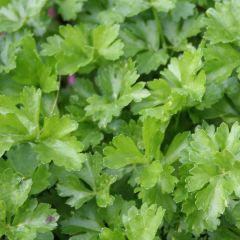
Parsley Giant of Italy
- Height at maturity 60 cm
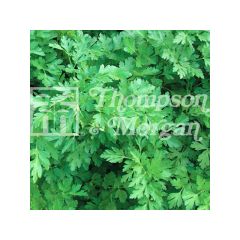
Laura Flat-leaf Parsley
- Height at maturity 60 cm
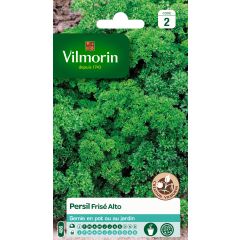
Curly Parsley Alto - Vilmorin Seeds
- Height at maturity 40 cm
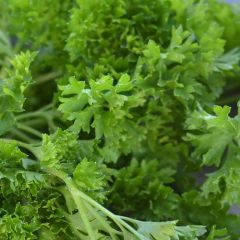
Curly Parsley Bravour
- Height at maturity 30 cm
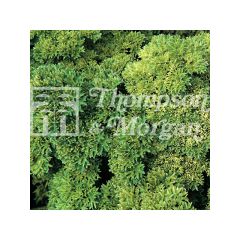
Champion Curly Parsley
- Height at maturity 30 cm
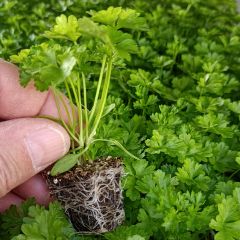
Petroselinum crispum Frisé vert foncé
- Height at maturity 20 cm
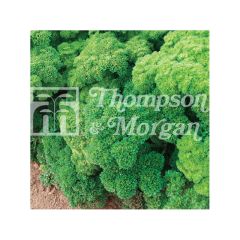
Petroselinum crispum Lisette
- Height at maturity 25 cm
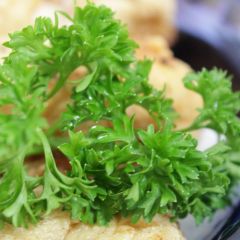
Parsley Moss Curled
- Height at maturity 25 cm
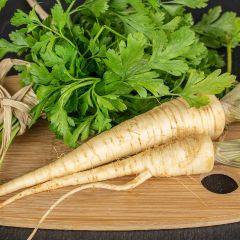
Hamburg Parsley - Turnip-rooted Parsley
- Height at maturity 60 cm
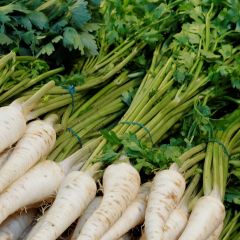
Hamburg Parsley Pietruzska - Turnip-rooted Parsley
- Height at maturity 40 cm
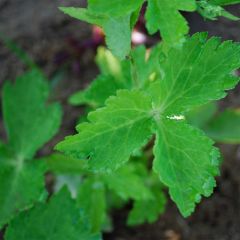
Mitsuba Parsley - Ferme de Sainte Marthe Seeds
- Height at maturity 50 cm
Discover other Parsley
View all →Available in 1 sizes
Available in 1 sizes
Available in 1 sizes
Available in 1 sizes
Available in 1 sizes
Available in 1 sizes
Available in 1 sizes
Available in 3 sizes
Available in 1 sizes
Sowing parsley
Parsley is not a plant that rushes to germinate; it typically takes an average of 20 days for germination at an average temperature of 20°C. This duration can extend up to a month at lower temperatures. To speed up germination, it is advisable to
Sowing can be done in various ways: in buckets, plug plants, or directly in the soil.
Sowing in buckets or plug plants
Preparing your young plants is the easiest way to control the germination of parsley seeds. This method also reduces the chore of thinning. Sowing in buckets is done from March onwards in an unheated shelter. The optimal temperature for germination is 20°C (15°C minimum).
To sow in buckets or plug plants:
- Start by filling your containers or preparing your plug plants using a good seed sowing compost,
- Moisten the substrate properly without soaking it excessively,
- Place three or four seeds per bucket or small plug,
- Cover with a thin layer of compost (or sand),
- Water gently using a spray bottle,
- Repeat this last operation until germination: the substrate must always remain moist.
Your parsley young plants can be planted in the ground as soon as they have at least two true leaves in addition to the cotyledons present at germination.
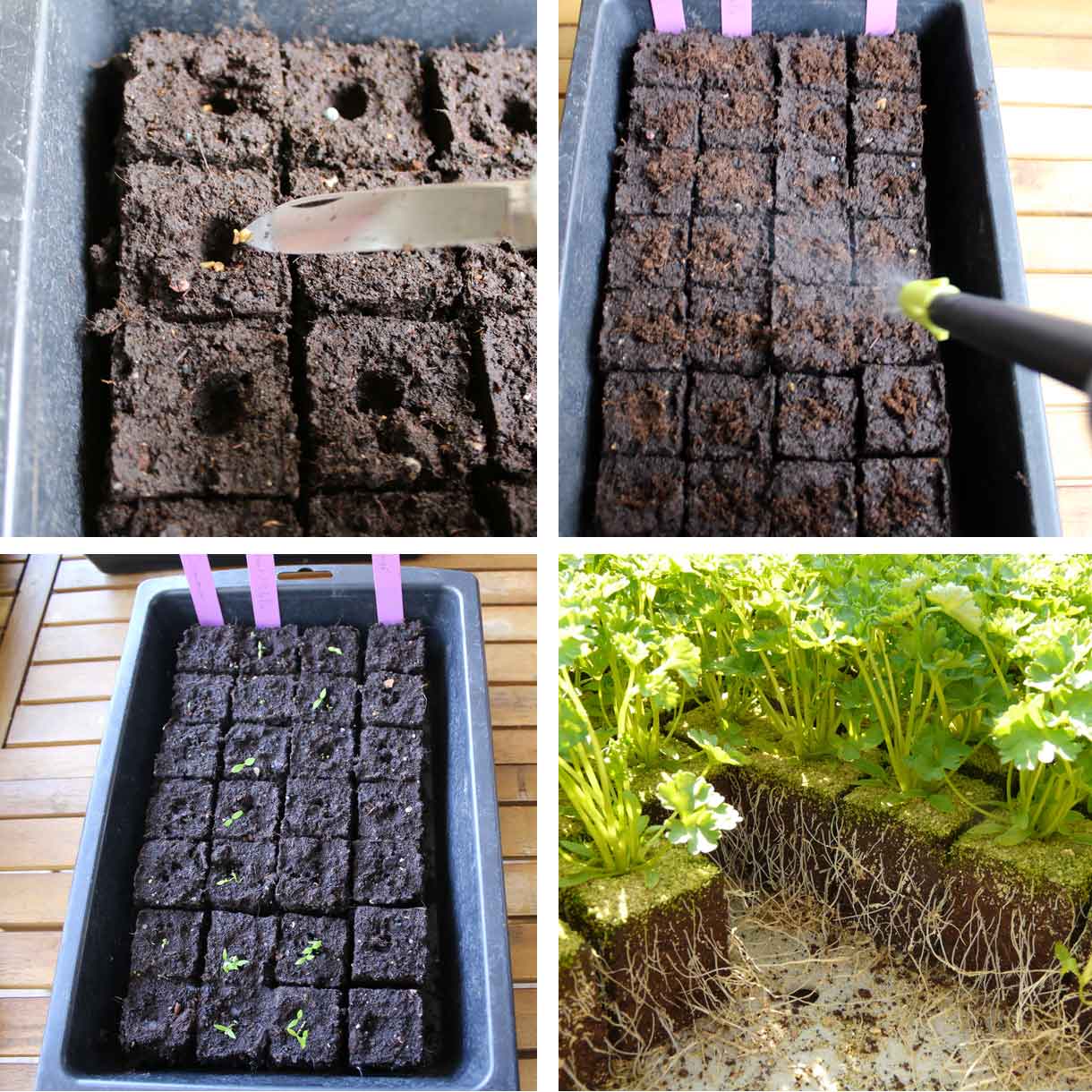 Sowing parsley in plug plants: 1) the seeds are soaked in water before being sown – 2) the plug plants are sprayed – 3) germination begins after just 8 days – 4) a few weeks later, the parsley is ready to be transplanted into the garden
Sowing parsley in plug plants: 1) the seeds are soaked in water before being sown – 2) the plug plants are sprayed – 3) germination begins after just 8 days – 4) a few weeks later, the parsley is ready to be transplanted into the garden
Sowing in the ground
Direct sowing in the ground is generally done in April and May. It also has advantages: it is quick and prevents disturbing the roots during transplanting.
To sow in the ground:
- Rake to break up the last clumps and create a fine seedbed,
- Perform a first watering to moisten the soil well,
- Sow your seeds in the desired location, ensuring not to sow too many,
- Cover with a thin layer of soil or compost,
- Water gently using a watering can to avoid disturbing the seeds,
- Mark the sowing location with a label,
- Keep the soil moist until germination,
- Continue to water until the young plants are well established, as they are vulnerable to water shortages.
If you have sown too many seeds, you may need to thin your sowing: find out how to proceed in our advice sheet “Thinning of sowings.”
Tip: to maintain soil moisture, you can cover the sowing with a textile, such as burlap, until germination.
→ Also read Alexandra’s tips in the tutorial How to sow parsley?
Read also
Succeeding in growing parsleyPlanting parsley, in the garden or in pots
Planting parsley in the garden
Parsley plants are installed in the garden at the end of April, once the last severe frosts have passed. If the plants are from your sowing, you will generally plant them two or three months after sowing or earlier if they are well ramified and reach a good ten centimetres.
When planting, maintain a spacing of 25 cm between two plants or two clumps of a few plants.
As with sowing, planting is done in loosened and weeded soil. To plant your parsley plants:
- Dig a hole that matches the size of the plant,
- Place your parsley plant,
- Fill the gaps with soil,
- Proceed with an initial watering.

Planting parsley in the garden
Planting parsley in a pot
Growing parsley in a pot, on a balcony or on a windowsill, is entirely possible. It is even very practical to have it always within reach.
To plant parsley in a pot:
- Place some gravel or clay balls at the bottom of a pot to facilitate drainage.
- Fill the pot with good potting soil,
- Loosen, if necessary, the roots of your plant,
- Adjust the root ball in its new container by adding pre-moistened potting soil.
- Water them and shade them from the sun with an overturned crate until the plants have established well.
Note: Plants grown in pots need regular watering; the potting soil must always remain moist!
→ Learn more about growing parsley in a pot
Cultivation, maintenance and watering
Parsley thrives in a wide range of soil but prefers humus-bearing, well-drained, and relatively cool soils. It can also be grown in pots. In the garden, it is planted, whether from seeds or young plants, in soil that has been previously loosened and well-weeded. To do this, loosen the soil using a broad fork or a spading fork, taking care to remove any potential herbs.
Parsley does not require special maintenance unless the summer turns out to be dry. In this case, regular watering will be necessary to prevent it from dying. Be particularly vigilant if you are growing your parsley in a pot or if your soil is predominantly sandy and does not retain moisture.
A nutritive mulch made of dried grass clippings or even adventive plants (formerly known as “weeds”) pulled from around will be most beneficial for maintaining soil moisture, protecting it, and providing natural fertilisation.
→ Learn how to properly store your parsley in our tutorial!
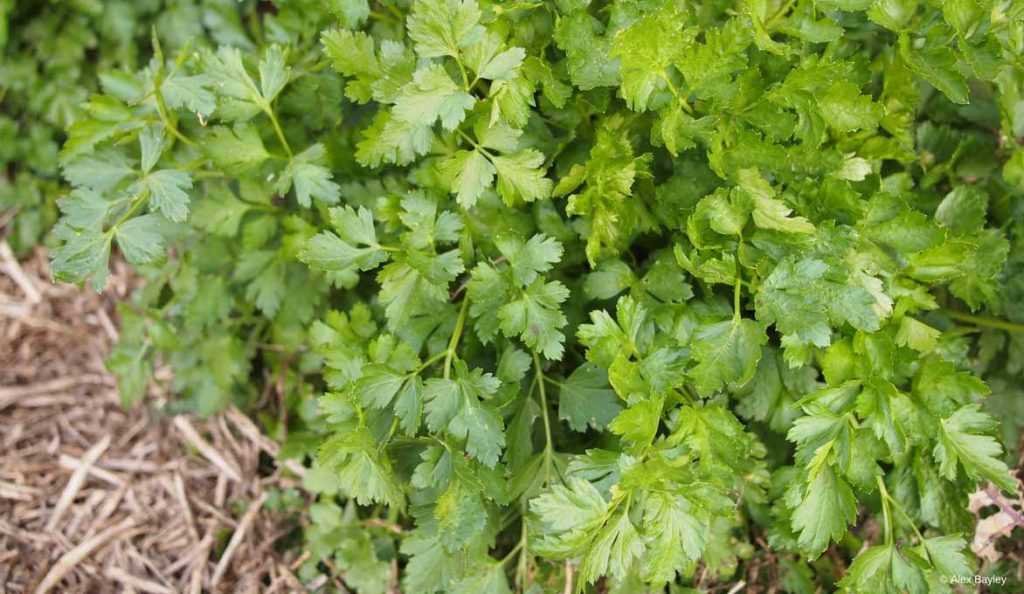
Mulching the base of parsley plants helps to retain good moisture in the soil
Companion planting
Generally in the vegetable garden, Apiaceae and Alliaceae protect each other from their respective pests. A well-known association is the carrot, which repels the onion fly, and the onion, which repels the carrot fly. Thus, when these two plants are grown near each other, a protective synergy against pests occurs. Parsley, let us remember, is part of the Apiaceae family and will appreciate the proximity of onion, leek, chives, etc. It will also enhance the fragrance of roses. However, avoid growing parsley near other Apiaceae (carrot, celery, parsnip, fennel, coriander, etc…)
From a practical standpoint, in a family vegetable garden, it is rare to grow entire ranks of parsley. It is preferable to reserve a spot at the end of the flower bed or a small square for this unique herb.
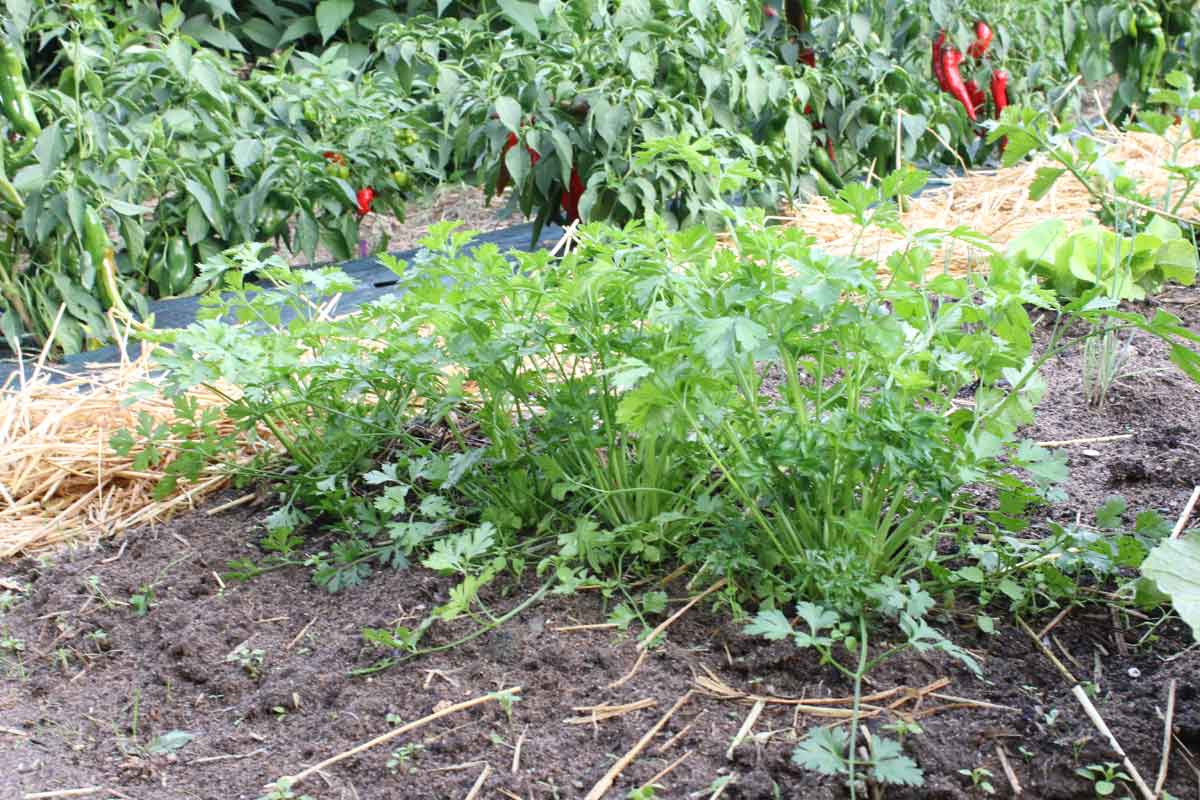
A few parsley plants at the end of the flower bed are enough for regular and generous harvests – It is associated here with chives
Harvest and storage
Harvesting Parsley
Parsley can be harvested from the first year, usually three months after sowing, as soon as the young plants are about 15 cm tall. This continues, if your regional climate allows, until November or December. Harvesting can be done directly with scissors or by pinching the stems, as needed for cooking.
Always start the harvest by picking the outer leaves first without cutting the central shoot, which stimulates the plant and encourages the formation of new shoots.
To continue producing leaves in the second year, cut the flower stems in spring to force the plants to produce leaves, unless you decide to save seeds.
Storing Parsley
Parsley is best consumed fresh, picked as needed. However, it often happens that more is harvested than is immediately required. Rather than letting it go straight to compost, here are some storage tips:
- If you plan to use it within the week, simply place the stems in a glass filled with water. If you remember, change the water every couple of days to prevent the leaves from yellowing too quickly.
- To continue enjoying your parsley in winter, it is also possible to freeze it. To do this, wash it and then let it dry thoroughly. Gather the stems into bundles and place them in a freezer bag.
- If you prefer to let it dry, wash the branches, pat them dry carefully, and then hang the bunches upside down in a dry, ventilated place. When the branches become brittle, crumble them and transfer to an airtight container protected from light.
Producing Your Own Parsley Seeds
At the end of the first year of cultivation, it is quite possible to keep your parsley plants. Being a biennial plant, it will produce its flower spikes in the second year of cultivation, you can then take the opportunity to harvest some leaves but mainly collect your own seeds.
From the end of summer, in August-September of the second year, the umbels will dry out and the seeds will detach. Seeds are harvested by rubbing the umbels between your fingers to release them. It is also possible to cut the umbels and continue drying them in a ventilated area until the seeds easily fall off.
Another approach is simply to let the seeds self-sow. They will germinate at the end of summer in the second year or as early as spring of the following year. This method is not recommended for gardeners who prefer neatness in their flower beds, but it is quite relevant in a natural garden or permaculture approach.
If you are growing several varieties of parsley, it is best to let only one variety go to seed each year to avoid hybridization with other varieties. It is also advisable not to let celery go to seed in the same year, as it can hybridize with parsley. You can add a selection criterion by removing the weakest or sickly plants. Finally, when harvesting the seeds, only keep the main umbels, those with the most nutritional reserves that will germinate better.
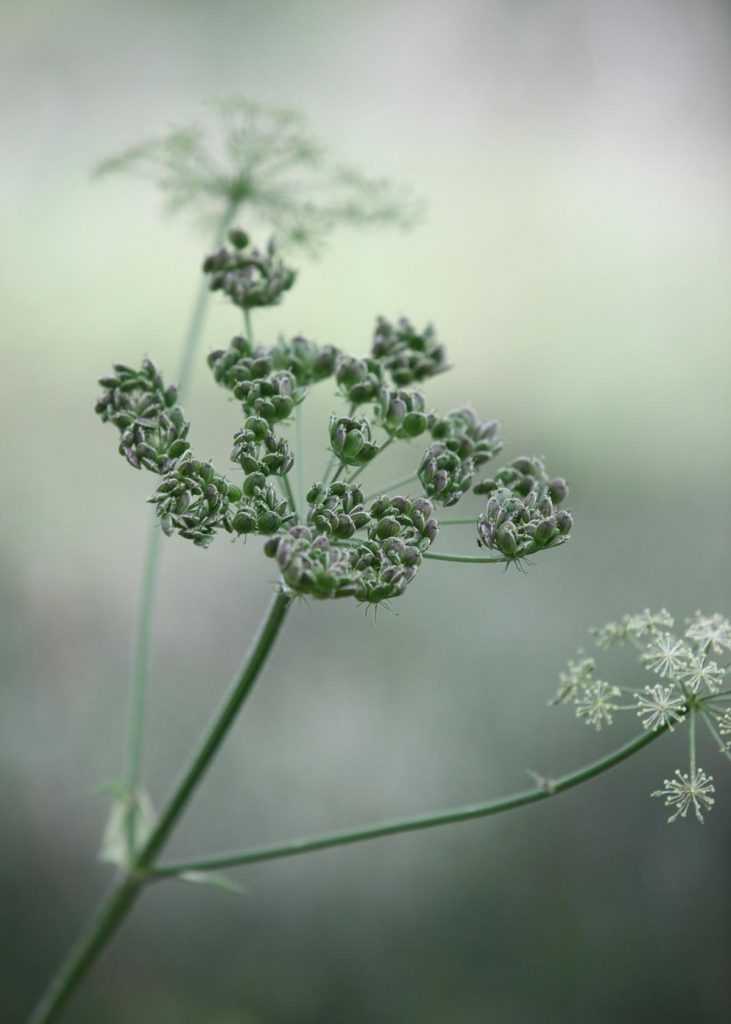
Parsley seeds, ready to be harvested
Uses and Benefits of Parsley
Using Parsley in Cooking
Parsley is versatile in cooking, having a pot of parsley always on hand is a great culinary asset!
It is often included in bouquets garnis alongside thyme, bay leaf, and rosemary. Pair it with garlic and olive oil and you get the famous persillade that can enliven any vegetable dish. It is also frequently used as a decorative element on plates (can we imagine devilled eggs without parsley?). It can be finely chopped and added to dishes at the end of cooking, just off the heat. This way, you avoid losing its flavour and denaturing its vitamins.
Tubers of parsley, on the other hand, are used in soups.
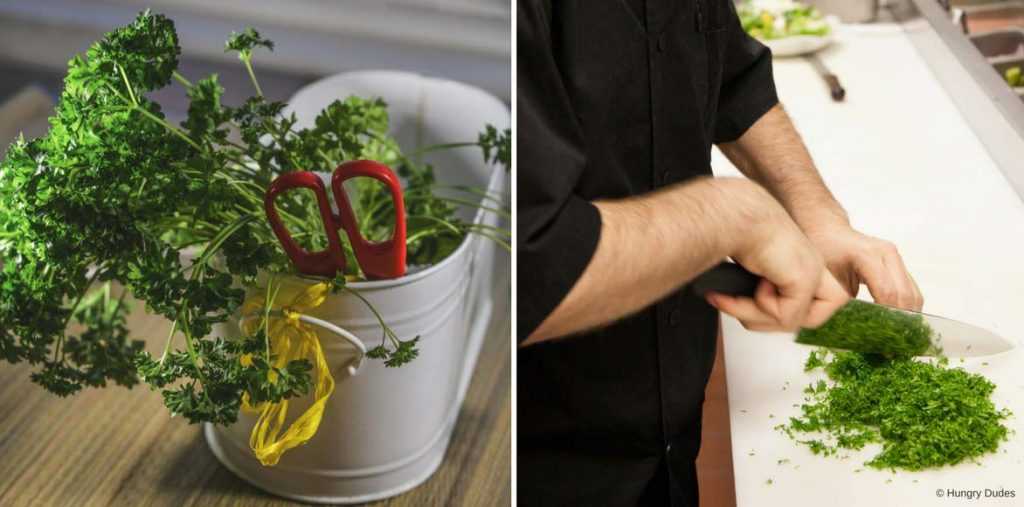
Conservation and preparation of parsley
The Benefits of Parsley
Parsley promotes elimination and thus supports good digestion. To take advantage of these properties, you can prepare parsley tea by chopping the equivalent of a teaspoon of leaves per cup of boiling water. Let it steep for 5 minutes and strain before drinking.
In addition to its aromatic taste, parsley is a plant with many virtues:
- It prevents anaemia as it is rich in vitamins and minerals. Notably, it has a very high content of vitamins C and A: 100 g of raw parsley contains four times more vitamin C than 100 g of an orange and four times the daily required dose of vitamin A. To fully benefit from these vitamins, however, it is important to avoid denaturing them during cooking
- It is a good stimulant for the nervous system
- It has a detoxifying and diuretic effect that promotes elimination.
- It accelerates the onset of menstruation and regulates the menstrual cycle
- It is also an effective plant for combating bad breath.
Useful resources
Discover our wide range of parsley: many varieties are available as seeds or young plants.
Frequently asked questions
-
Why does parsley turn yellow?
Possible causes are numerous, it all depends on where and when the parsley turns yellow. - The outermost leaves yellowing is quite natural; they have completed their function and make way for the young leaves. - Is the entire plant yellowing? This could indicate a nutritional problem (soil or substrate too poor) or a physical issue (cool temperatures), but it could also be due to a pest. In the case of parsley, the carrot fly may be responsible: its larvae burrow at the root level, causing the plant to yellow and eventually die. - Also note that in the second year of cultivation, the leaves are less attractive than in the first year. Indeed, the plant will direct its energy towards reproduction (formation of flower stalks, flowers, and then seeds). The leaves then take a back seat and become paler.
-
My parsley is going to seed, why?
Parsley is a biennial plant whose life cycle spans two years. In the first year, parsley develops its vegetative structure (leaves, root), and in the second year, it dedicates itself to reproduction (flowers, seeds). Therefore, it is quite normal for it to bolt in the second year of cultivation. However, if parsley suffers, if it is exposed to a location that is too hot and dry, or if it lacks water for an extended period, it may bolt prematurely. It is essential to provide a more suitable location for future sowings: in the shade of a tree or a wall, for example.
-
Why isn't my parsley sprouting?
It is quite possible for seeds not to germinate, even for the most experienced gardeners:
• A seed is alive. Always check the germination viability period. This refers to the duration during which the seed is capable of germinating. This information is systematically mentioned on seed packets. For parsley, it is 3 years.
• Poor storage conditions for seeds lead to a decrease in germination viability. Store your seed packets indoors in a dry place, not too warm in summer, and away from direct sunlight.
• Most vegetable seeds have primarily two (sometimes more) essential needs for proper germination: sufficient temperature and humidity. The most important factor is to maintain a constant level of moisture, neither excessive nor deficient. To achieve this, water sparingly and regularly during the germination period and continue as long as the plants are young. It is also essential to sow at the times indicated on the seed packets.
• Damping off is also a possible but rarer issue, caused by various species of pathogenous fungi that can kill young seedlings. This problem can be prevented by avoiding excessive watering and by sprinkling the sowing with charcoal or powdered cinnamon.
- Subscribe!
- Contents































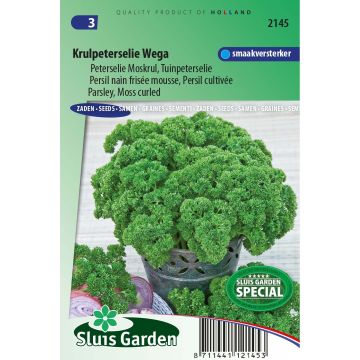

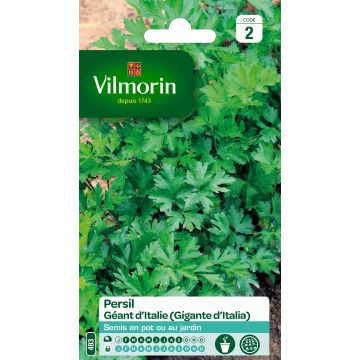

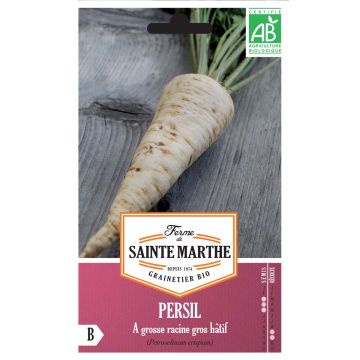
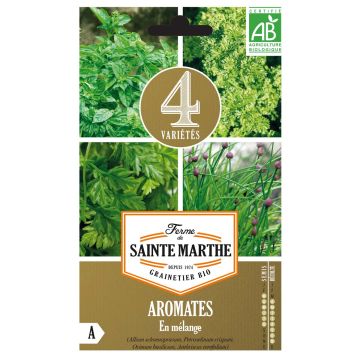

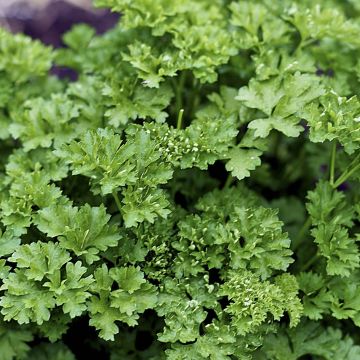
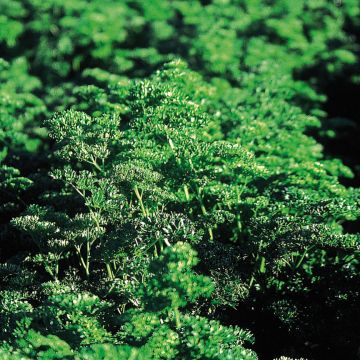

Comments